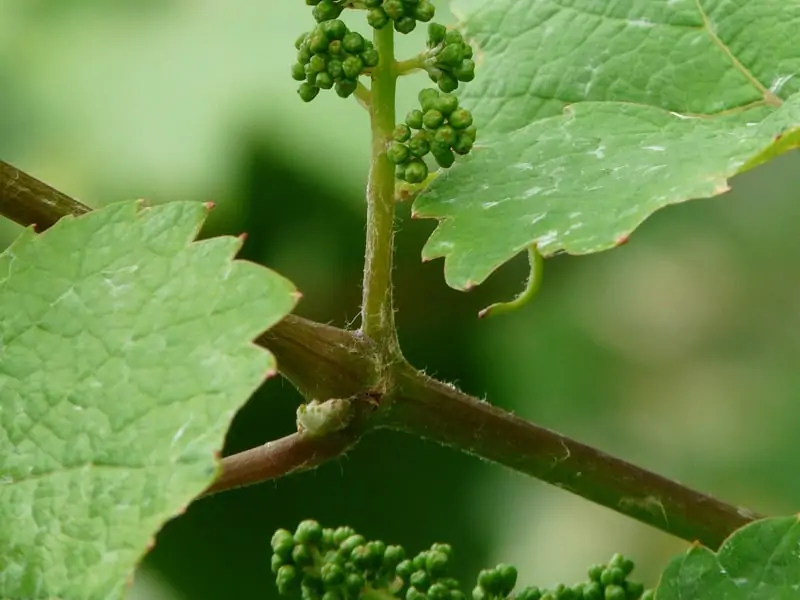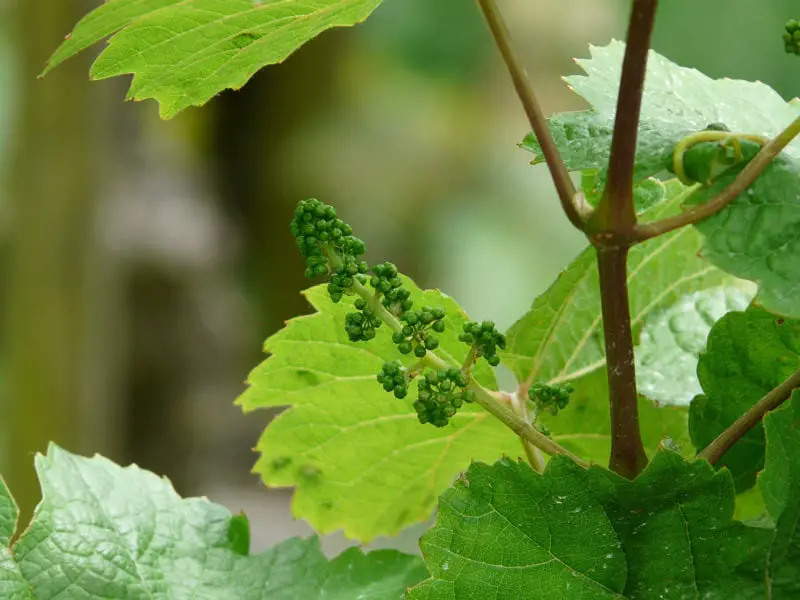Table of Contents
Grapevine bonsai trees actually have the ability to give a look of something out of the world. It is considered one of the most beautiful bonsai options because of its patterns which can catch the eyes of any person even if he or she is not a fan of bonsai or even gardening. The shape of grapevine bonsai is almost like some grapevine tree that can be seen in any vineyard or backyards of some homes.
Grape Vines trees actually have climbing habits as they can be seen staying on a wall, ladder, or some ropes but when it comes to the bonsai trees, they can be shaped into small bushy plants that have normal branches, stems, a trunk, and all other art like any other normal tree. As there is a lot more to know about this must-have bonsai tree, let’s start with some basic but most important information followed by a bunch of useful knowledge.
| Species | Vitis Vinifera |
| Average Height | 10 to 20 inches |
| Average Spread | 6 to 12 inches |
| Origin Country | Caspian Sea, Southwestern Asia |
| Flower Bloom Time | March to August |
| Varieties | Grapevine balls dollar, Grapevine Christmas tree, Grapevine cone tree |
| Family | Vitaceae |
| Leaf | Evergreen |
| Water | Moderate to High (Regular without letting the soil dry) |
| Sunlight | Low |
| Maintenance | High |
| Growth | Fast/Rapid |
Can we have a bonsai grapevine tree?
It looks impossible to a lot of people that grapevine can actually be converted into a bonsai because of its climbing nature. Well, that’s not a good reason to avoid this tree that could be your next favorite bonsai.
Grapevines grow at an extremely fast speed and can reach an unexpected height in no time, so you will get to see the result very soon.
You can bonsai grapevine. Grapevine grows like a shrub plant with branches and bushes when it is grown as bonsai. The fact is that no matter what plant it is; when it is grown in a pot instead of ground, a lot of things change.
Grapevine bonsai history

Although it is known that bonsai was first initiated in different regions of Japan and China, grapevine trees actually originated from a wide range of regions. It is considered to be native to Southwestern Asia, Central Europe, and the Mediterranean region.
Some other regions or parts mainly categorized as native land to grapevine bonsai include Eastern Iran, Northern Iran, Southern Germany, Northern Germany, Portugal, and Morocco.
You may be amazed to hear that there is a wide range of grapevine tree species and varieties (from 5000 to more than 10000) but not all of these can be used for best-desired purposes.
Because of its edible fruits and its inclusion in cultural cuisines in various regions of the world, it started to gain popularity and reached new lands especially because of travelers.
On this day, grapevine bonsai trees can be found in all minor to major parts of the world except from one big continent, Antarctica.
Grapevine bonsai scientific name

Grapevine is the most common name among people but when it comes to science, it is only known as Vitis Vinifera.
Depending upon its types and natures, it is also regarded by other names sometimes such as Vitis Sylvestris.
Experts also claim that although they may call grapevine with different names, its actual scientific name is V. Vinifera while others are just the titles of its subspecies or different varieties.
Grapevine bonsai care
Grapevine bonsai is one of those trees that require a lot of maintenance and care to grow as they should.
You will have to keep an eye on the bonsai pot while ensuring various factors such as sunlight, watering, air ventilation, water drainage, and many more.
Just remember that once you see a bonsai in its full form, you will feel that all the hard work and time given was surely worth it.
Grapevine bonsai temperature
- Grapevine bonsai trees are capable of surviving in moderate temperatures whether it is cold or hot but protection from extreme temperatures is also recommended.
- In general, they love to grow in warm places as it boosts their growing process. They may survive winter as well but growth is either stopped or slowed down to a greater extent.
- You should protect it from both direct sunlight as it can cause burns and cold frosts as they can lead to leaves fall as well.
Grapevine bonsai fertilizer
- Fertilizer should only be fed to grapevine bonsai during its growth period.
- Its growth period is usually at full boost during the mid to late summer and then the whole of spring.
- During this time, feeding fertilizers with a balanced amount of nitrogen is essential about once a month.
- Feeding fertilizers is essential as it is the only way to meet the required amount of nutrients required by the bonsai to grow and thrive in a small container with limited soil and other resources.
Grapevine bonsai pruning/trimming
- Spring or any growing stage is the best time to prune or trim grapevine bonsai as it further boosts its growth.
- Wiring can also be done for shaping purposes but pruning is considered the best option. The major reason is the time as wiring may need up to 6 months to bend a branch as you desire.
- During the initial growing stage, trimming all the big branches or shoots would be best leaving only small buds at the top as you need to make way for bonsai to grow upwards while spreading properly as well.
Grapevine bonsai repotting
- Repotting should be done every three years if not the two.
- Just remember that the more frequently you repot a bonsai plant, the better it grows and has an increment in its life as well.
- Most frequently only means that if you feel it needs repotting, just do it, don’t wait for 3 years to complete because sometimes only 1 year is enough.
Grapevine bonsai pests and diseases
- A grapevine bonsai tree can be attacked by pests and disease but there are various solutions to each problem as well.
- Some of the most common pests include scales, aphids, and spiders while diseases include gray mold, powdery mildew, and downy mildew.
- Almost all of such diseases are caused by a fungus that can easily be taken out of the bonsai container using a balanced fertilizer.
Grapevine bonsai soil
- Grapevine bonsai don’t usually require any extra thing in the soil as they can grow efficiently in a normal bonsai soil mixture with proper watering and air ventilation.
- You may add moss to keep the soil wet for a long time as well as stones to keep the bonsai tree straight and perfect.
Grapevine bonsai watering
- The grapevine bonsai tree requires regular watering and during its growth stage, it may require extra frequency.
- The fact is that grape vines require a lot of water to grow as they are fast growers and need water to keep their pace right.
- The soil should not dry out completely between watering intervals but there should be a good drainage system because standing water inside the container can also cause the roots to rot and stop the growth process at all.
Grapevine bonsai sunlight requirements
- Sunlight should be given to the bonsai but it should be filtered.
- Direct sunlight is not appreciated at all except if you expose it during the morning time.
- Afternoon sunlight can cause burns to the leaves and sometimes the fruits of the tree as well.
- Experts even claim that grapevine bonsai should be placed a couple of feet away from the window if it passes sunlight without any shade in between.
Grapevine bonsai styles
Like any other plants and tree genus, grapevine trees also have a wide range of types that have their unique style and pattern in one aspect of the other. You may choose the one that suits your desire and interest the most and will add value and change to your room as well.
Grapevine balls dollar tree bonsai
If we talk about creativity, uniqueness, and a pattern that can stand out in any other bonsai, it will be just to say that the Grapevine balls dollar tree is one of those few options.
It’s round yet the tall shape is probably enough for a person to fall in love with this bonsai and decide to grow one at their home as well.
Grapevine Christmas tree bonsai
Grapevine Christmas tree bonsai is almost like a normal Christmas tree. The major difference is that there are no loose branches overhanging from all sides of the tree as the grapevine grows tall with proper geometry.
When it comes to bonsai, it is small in shape and will achieve the same pattern unless you modify it according to your interests.
Grapevine cone tree bonsai
Where the grapevine cone tree is a charming style of all bonsai types, keeping it in the shape is a bit difficult. You need to do proper pruning and wiring to make a well-crafted shape of it.
Most people make it like a Christmas tree but it has curves in between that make it look like umbrellas piled over each other.
Can we bonsai grapevine indoors?
Grapevine bonsai can be grown indoors as well as outdoors but you need to have proper shade or shelter while growing outdoors. They cannot survive extreme temperatures which makes them best suitable to be grown indoors. You are also suggested to keep them away from the window if direct sunlight comes through it, and doors if frosts pass through it.
How to grow a bonsai grapevine?
Growing a grapevine bonsai with cuttings is the best way as it gives the most efficient results.
- You can simply start by cutting a piece using the summer or spring season.
- Remove all the excess baggage while only leaving a few shoots that too if they are new and can boost growth.
- Use rooting hormone for the rapid initial growth of bonsai.
- Place that cutting inside the soil and water enough that it starts draining from the holes.
- Keep on watering the plant on a regular basis.
- Expose bonsai to good filtered sunlight for about 6 to 8 hours a day.
- It will only take a few weeks to see the new shoots coming out of the cuttings.
![Pittosporum Bonsai [Pittosporum Tobira]](https://www.bonsai-express.com/wp-content/uploads/2022/05/Pittosporum-Bonsai-365x200.jpg)
![Sorbus Bonsai [Sorbus Aucuparia]](https://www.bonsai-express.com/wp-content/uploads/2022/05/Sorbus-Bonsai-365x200.jpg)
![Tsuga Bonsai [Tsuga Canadensis]](https://www.bonsai-express.com/wp-content/uploads/2022/05/Tsuga-Bonsai-365x200.jpg)
![Tamarix Bonsai [Tamarix Ramosissima]](https://www.bonsai-express.com/wp-content/uploads/2022/05/Tamarix-Bonsai-365x200.jpg)